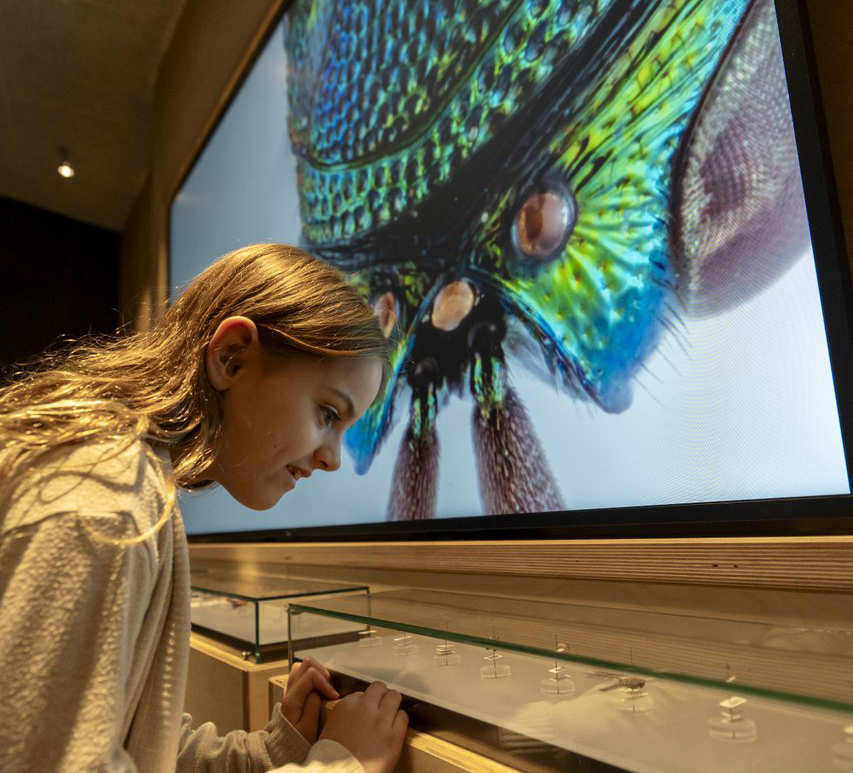This July and October, the Royal Saskatchewan Museum vertebrate palaeontology team headed up to the Carrot River, close to Melfort, Saskatchewan. Carrot River is where the large marine crocodile, ‘Big Bert’ (known to palaeontologists as Terminonaris robusta) was discovered and excavated. It is also the home of the rare fossil bird, Pasquornis. Because of its importance to the palaeontology of Saskatchewan, the fossil localities on the Carrot River have been designated as a Palaeontological Heritage Site. This would be the RSM’s first prospecting trip in the area in almost 15 years, and we were excited to find some new fossils!
 |
For the first trip to Carrot River in July 2015, I was joined by Saskatoon volunteer, Bernadette Wilson. The weather was warm and the water level in the river was low – we were ready for an adventure in ‘Saskatchewan’s Outback’! |
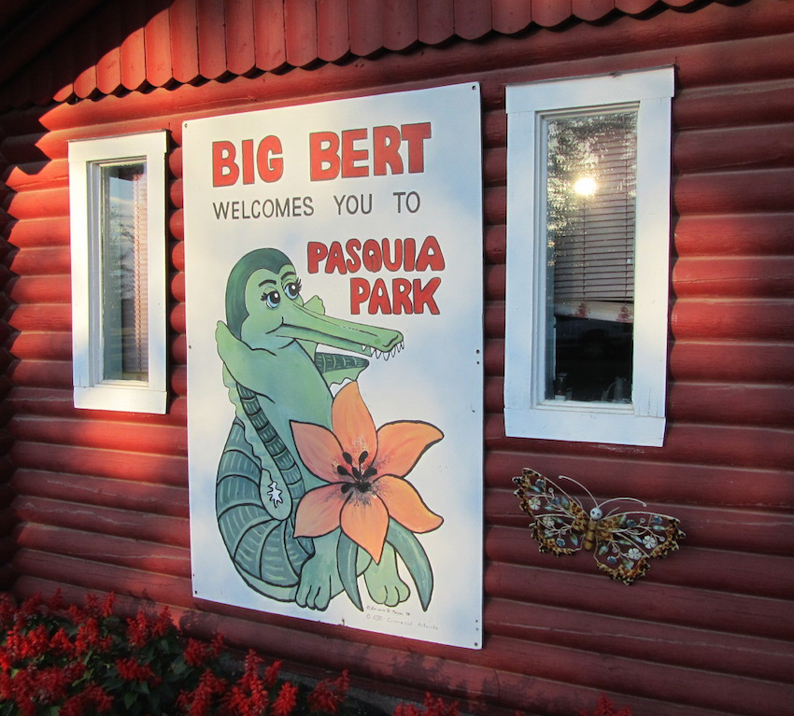 |
We camped at Pasquia Regional Park, which is less than a 10-minute drive from the two fossil sites on the Carrot River. Pasquia Park has made ‘Big Bert’ its icon! |
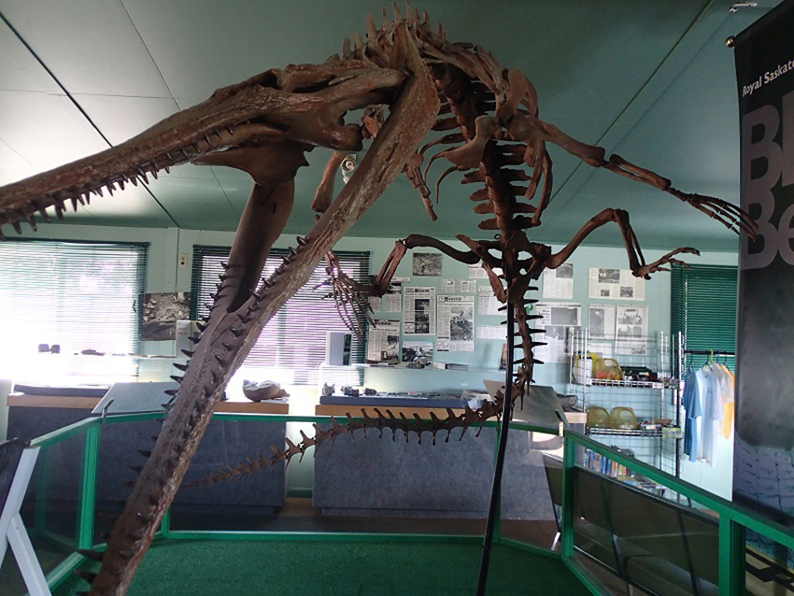 |
The Dickson Hardie Interpretive Centre at Pasquia Park is named for the discoverer of ‘Big Bert’. It is full of interesting information and facts about the finding of this giant marine crocodile. A mount of the ‘Big Bert’ skeleton remains there permanently. |
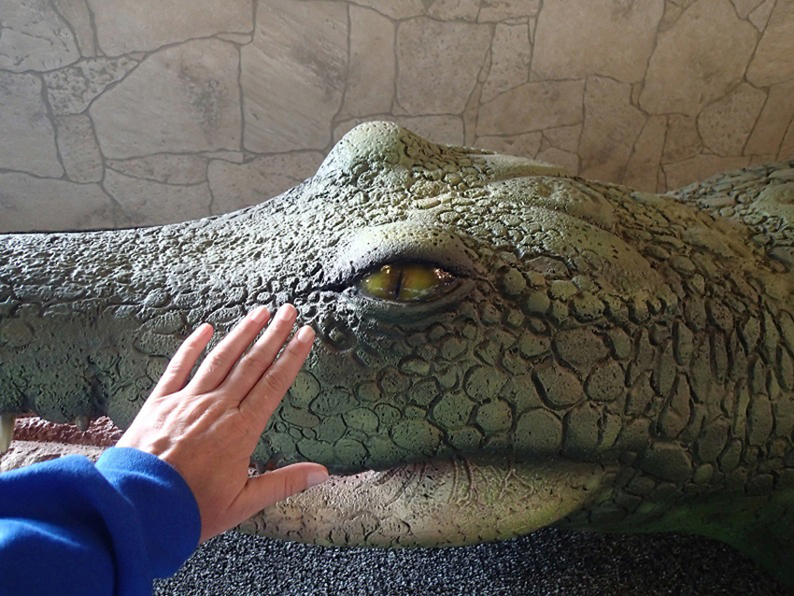 |
The Interpretive Centre also has a full-sized fleshed out version of ‘Big Bert’. You can imagine what it would have been like to pet it! |
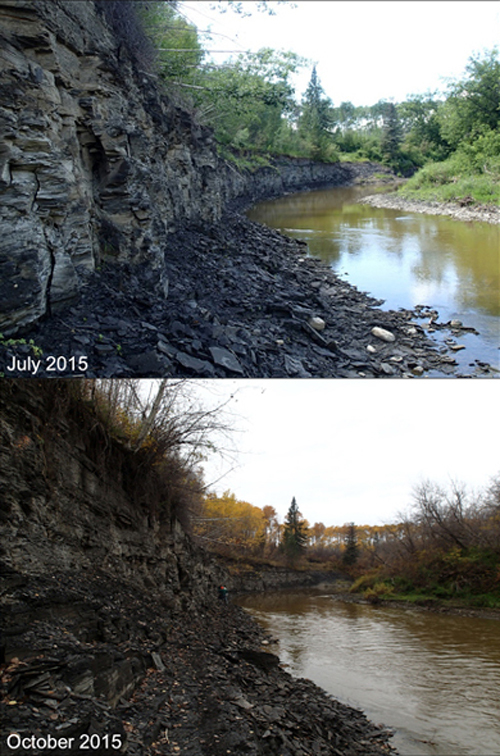 |
The fossil sites on the Carrot River are called DH2 and DH3. The ‘DH’ stands for Dickson Hardie, the original landowner and discoverer of many important Carrot River fossils, including ‘Big Bert’. Dickson’s nephew, Garth Hardie, took us out to the fossil sites and told us some of the history of the area. DH3 is the fossil site where the Terminonaris robusta skeleton (‘Big Bert’) was discovered. The picture below is of the site in July (top) and in October (bottom). |
 |
This is a close up of the ‘Big Bert’ quarry at DH3, indicated by the white arrow. There has been extensive erosion by the river since the specimen was collected in 1992. All that is left now is a narrow shelf about 6 m above the river. |
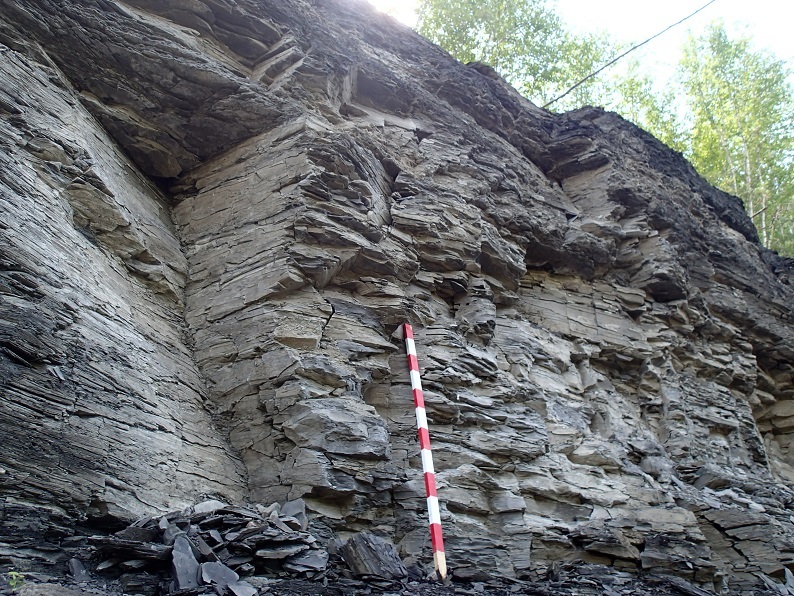 |
The rocks at DH3 are mainly fine-grained shale, telling us the sediments were deposited in a marine setting. The outcrop (rock face) is over 5 m high. These rocks and fossils here are 92 million years old. |
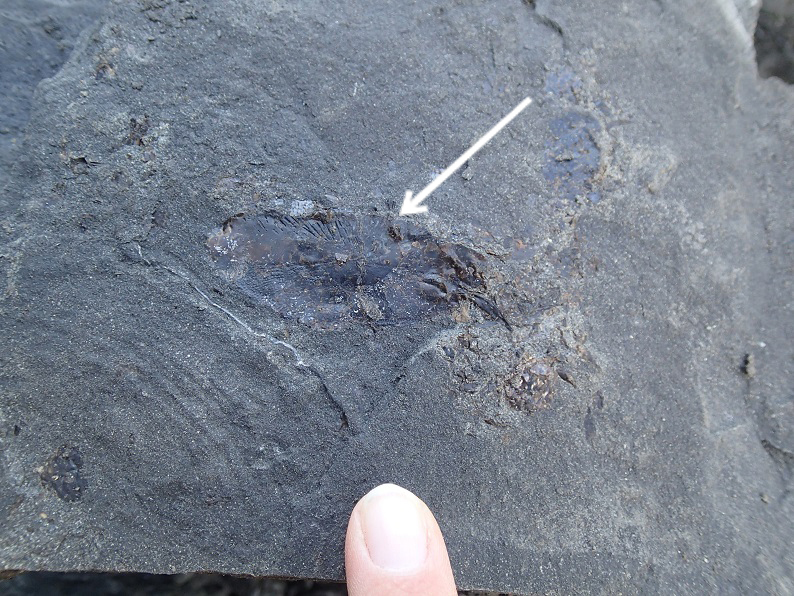 |
One of the most common fossils at DH3 are fish scales, such as the one indicated by the white arrow. They would have come from a large fish, approaching 2 m in length. The semi-circular impression to the left of my finger is the impression of a fossil clam shell. |
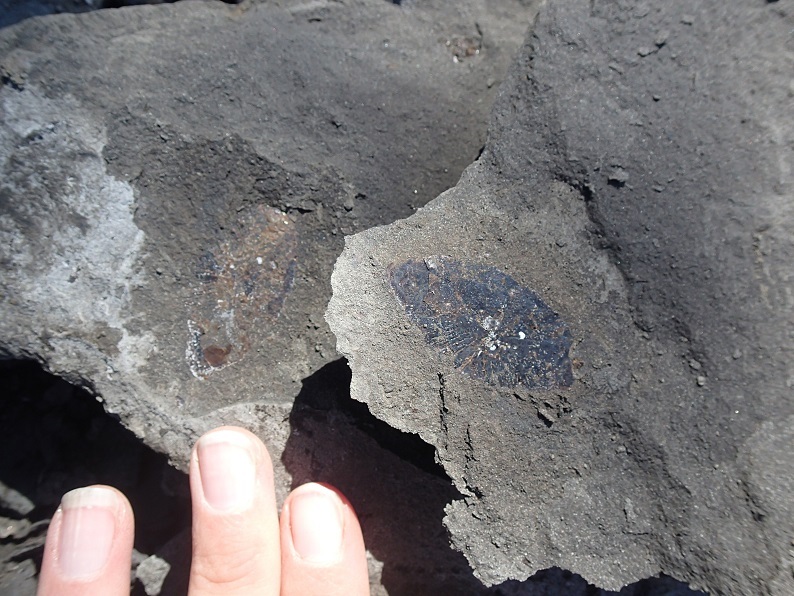 |
The fossils at Carrot River are found between layers of shale, and are discovered by splitting the layers of shale apart with a hammer and chisel. Many fossils, like the one below, have a part (the fossil itself, right) and a counterpart (the impression of the fossil, left). |
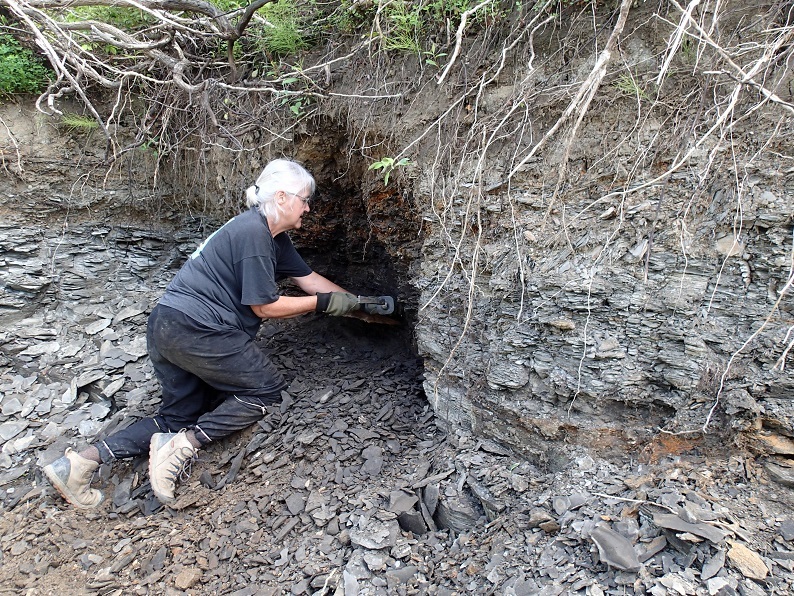 |
Here, Bernadette digs into the shale to extract some good slabs to start splitting. |
 |
We saw some neat animals that were not fossils DH3 in July, including this crayfish. |
 |
When we wanted a break, there were delicious wild strawberries to snack on! |
 |
We were joined on our third day at DH3 by the Cross family from Melville, who were keen fossil hunters and who had good eyes! |
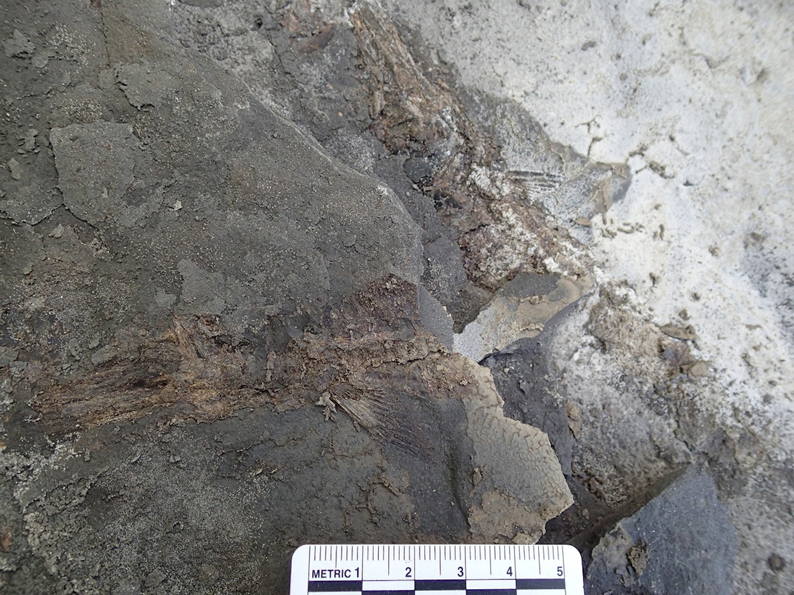 |
Rebecca Cross discovered one of the most significant finds of the trip – a complete skeleton of a small fish, with the scales and fin rays still intact! |
 |
Here, Rebecca proudly displays her find. |
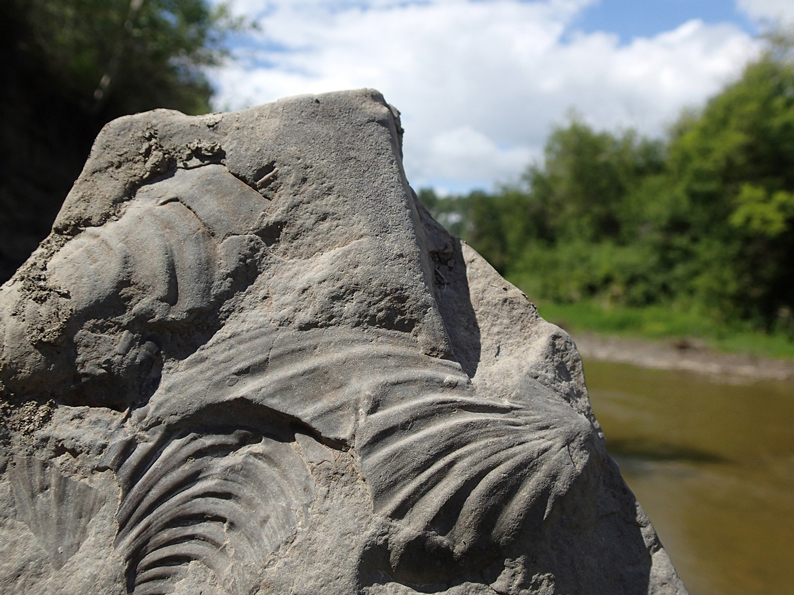 |
Fossil clamshells, like these ones, were also very common at DH3. |
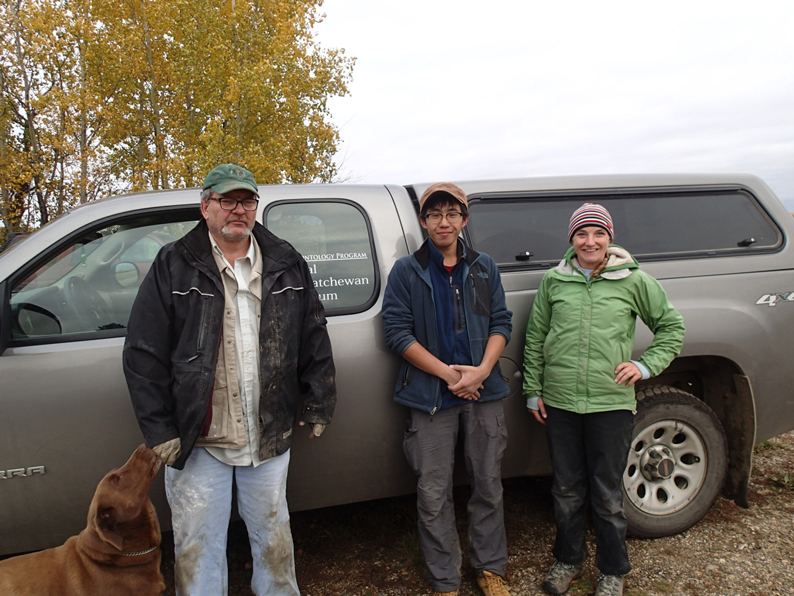 |
I returned to DH3 in October, along with Tim Tokaryk, Curator of Vertebrate Paleontology, and Japanese student Tomo Tanaka. It was much cooler! (The dog, Milo, belonged to Garth Hardie). |
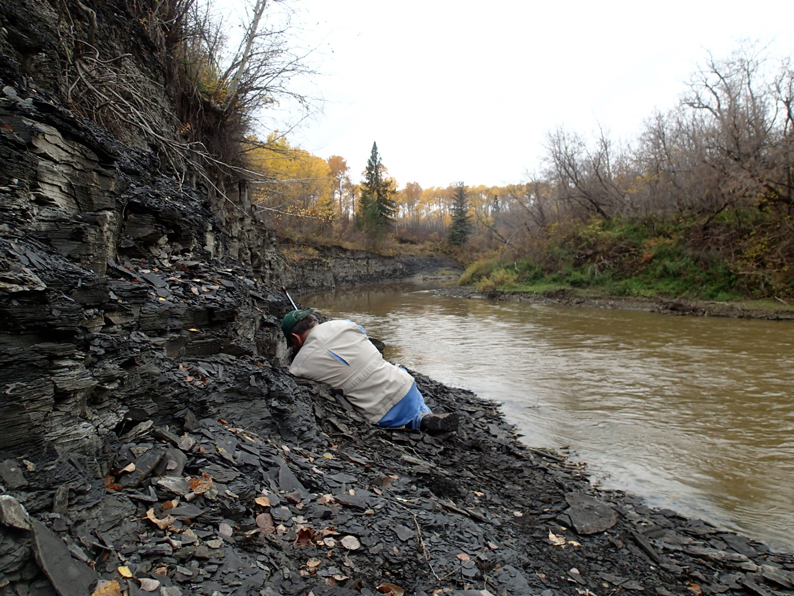 |
Here Tim splits shale at DH3, looking for fossils. The water levels were much higher than they had been in the summer. |
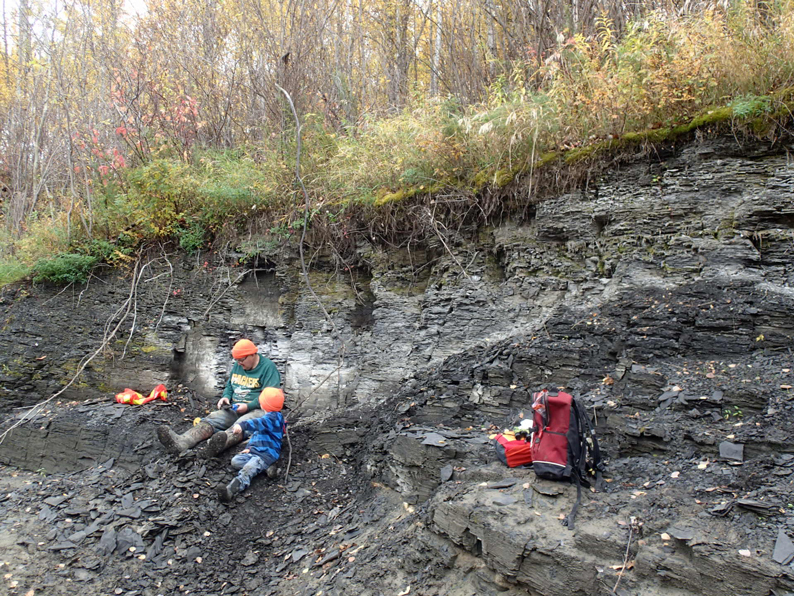 |
In October, we were also joined by volunteers from Arbourfield, Trevor and his grandson, Emmett. Note their orange toques – this was to prevent hunters from mistaking them for deer! |
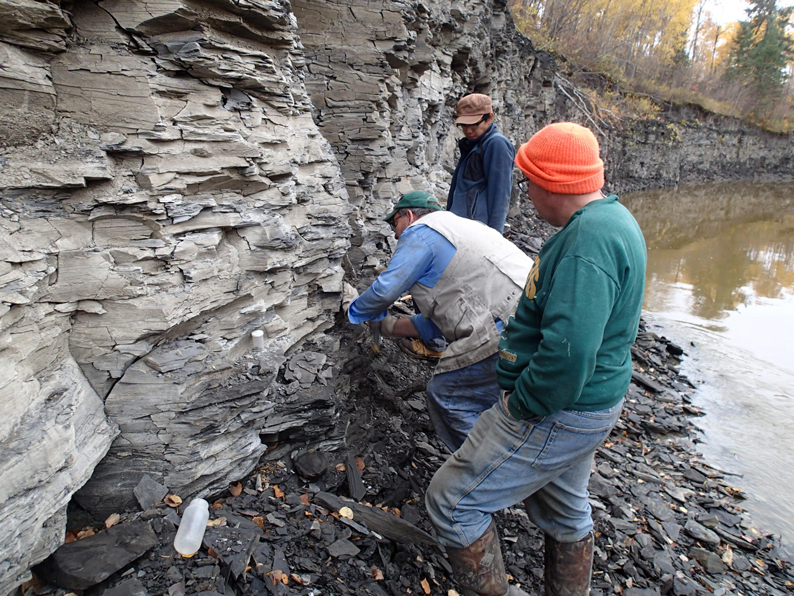 |
Here Tim, Tomo and Trevor examine an interesting fossil Tomo had found lodged into the shale close to the river edge. |
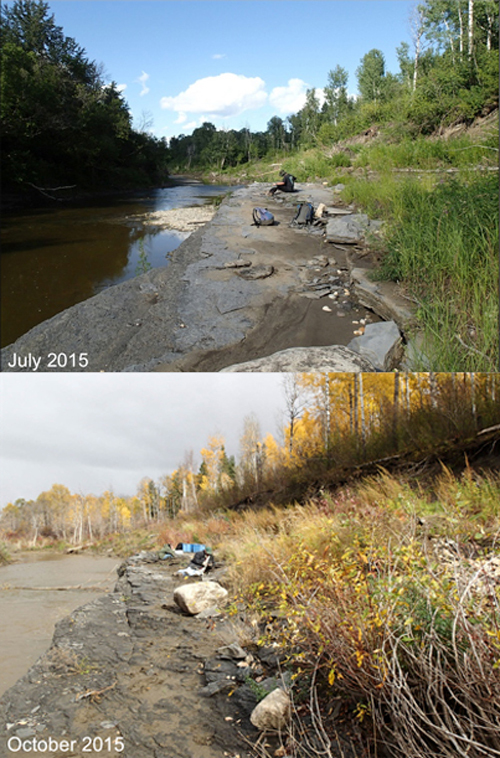 |
The second site we visited on the Carrot River is called DH2. In 1992, the complete skeleton of a four-metre-long fish called Xiphactinus was excavated from here. Below is the site in July (top) and October (bottom). |
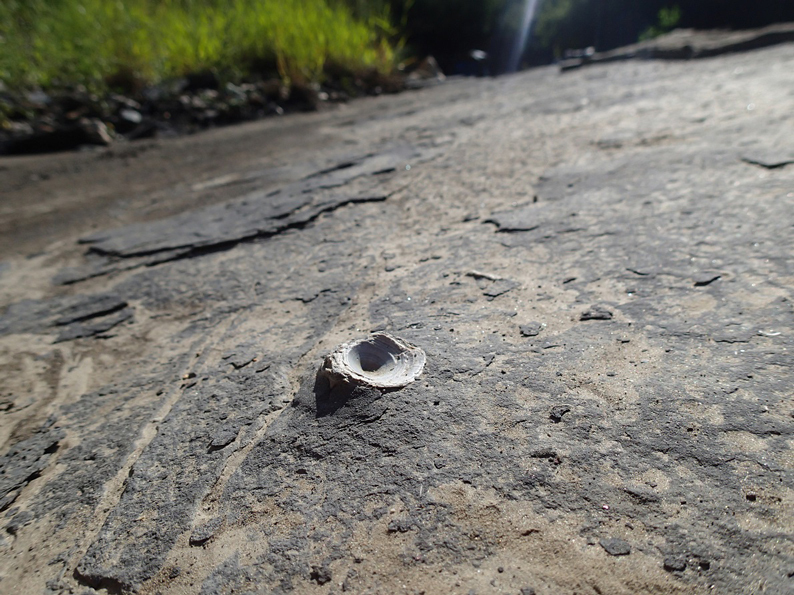 |
DH2 was found the have more fish vertebra than DH3, like this one eroding on the surface. |
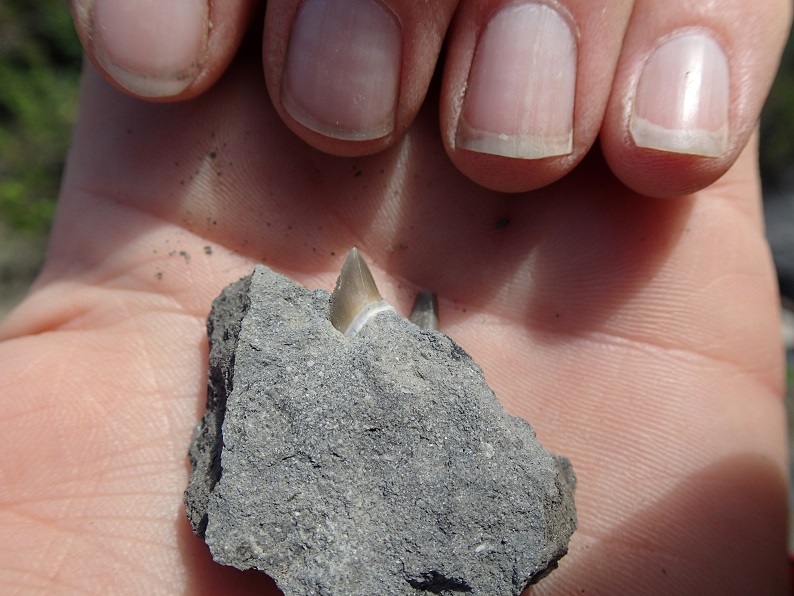 |
Shark teeth, such as this one, were also much more common. |
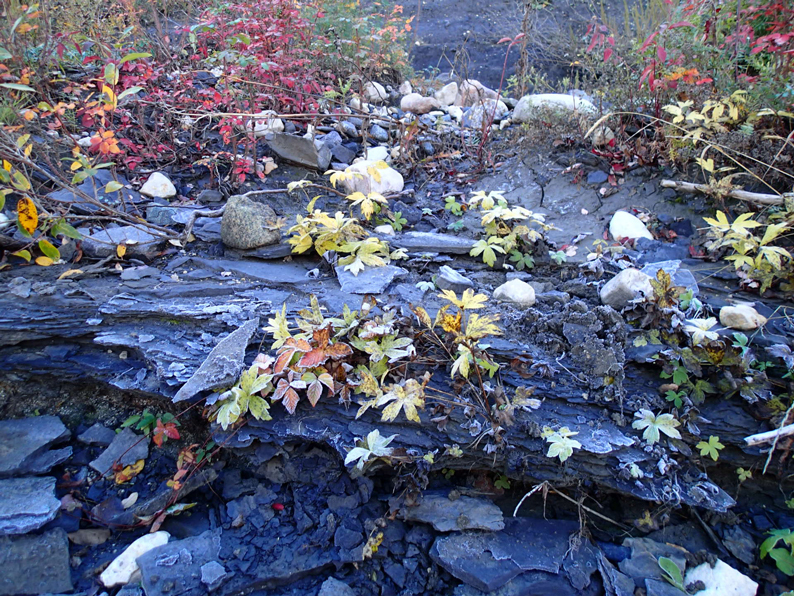 |
The weather was chilly when we returned to the site in October. Frost coated the outcrop and the fossils early in the morning. |
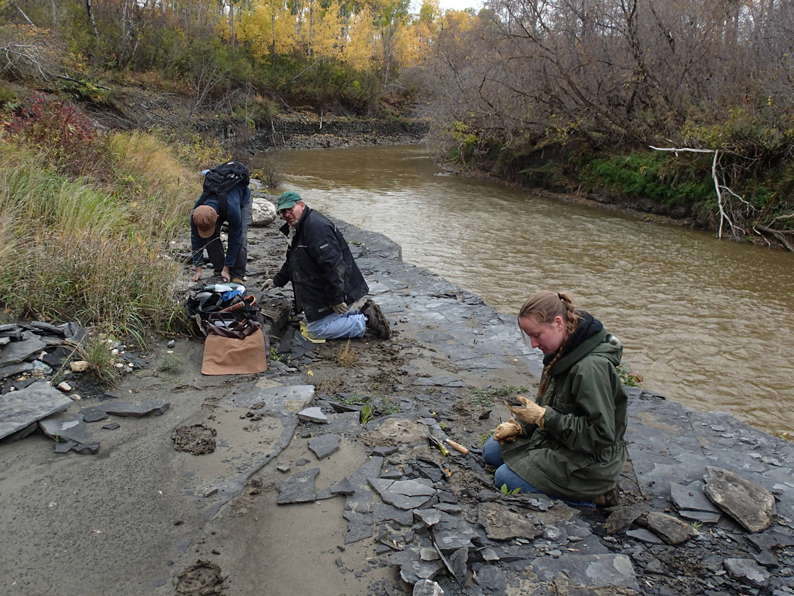 |
Here, Tim, Tomo and Carrot River volunteer Amanda split shales and examine the surfaces for fossils. |
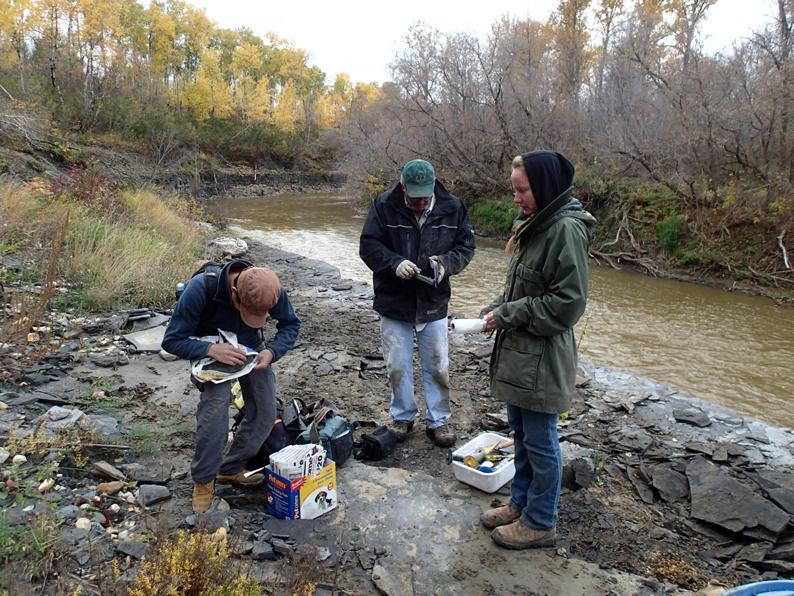 |
Both in July and October, the shale slabs containing fossils had to be carefully sorted, labeled and wrapped to prevent breakage during transport. |
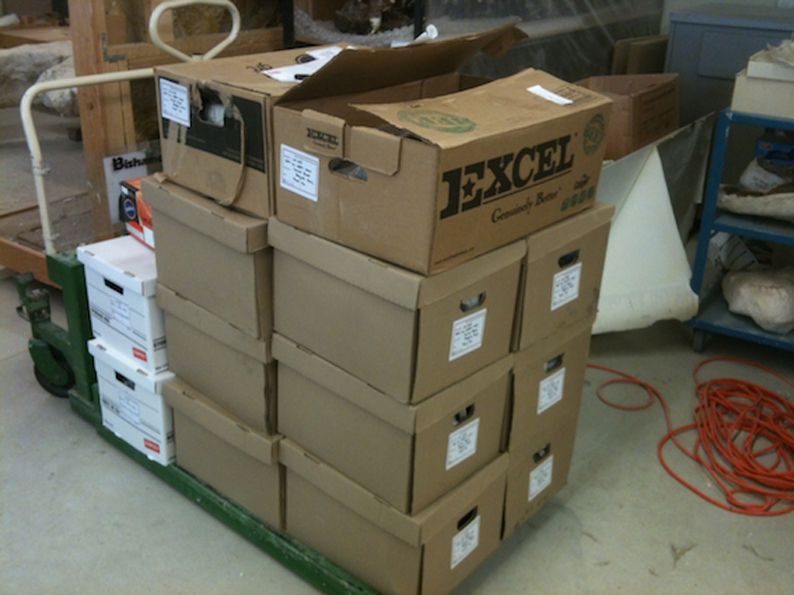 |
At the end of the July trip, approximately 200 lbs of shale slabs containing fossils came back to the T. rex Centre. Another 100 lbs were added in October. Now we have our work cut out for us as we carefully prepare and identify all of our findings. |
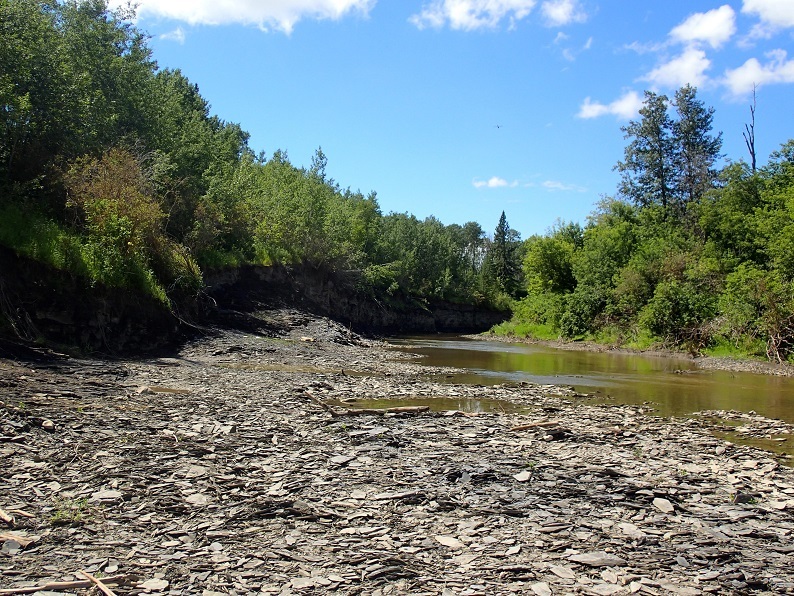 |
Carrot River was a serene and beautiful place to work – very different from the badlands we’re used to! If you ever have a chance to head up north, it is well worth a visit! |

